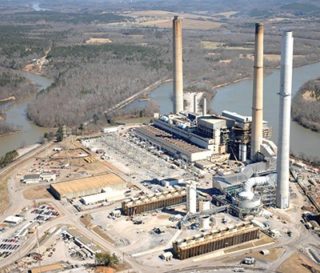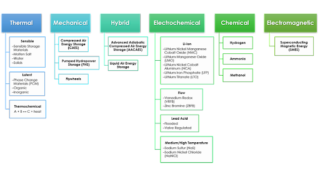-
US DoE funded thermal and hydrogen storage technologies to help transition fossil fuel systems
Date posted:
-
-
-
Post Author
Greg Kelsall
-
-
![]()
The US Department of Energy’s (DOE) Office of Fossil Energy and Carbon Management (FECM) has recently announced $2.4 million in funding for three projects to advance novel thermal and hydrogen energy storage technologies toward increased duration, reliability and affordability. The technologies will initially support the transitioning of existing fossil assets to low carbon energy systems, with the longer term potential to fully decarbonise the US electricity grid by 2035.
“The Office of Fossil Energy and Carbon Management is investing in projects that will advance thermal and hydrogen energy storage technologies for use during and beyond the electricity decarbonisation transition,” said Acting Assistant Secretary of FECM Dr Jennifer Wilcox. “By validating new options for electricity storage, these projects will move us toward achieving the cost and performance goals of DOE’s Long Duration Storage Shot: to reduce the cost of grid-scale energy storage by 90% for systems that deliver 10 or more hours of duration in one decade.”
The selected projects also support FECM’s Energy Storage programme and DOE’s Energy Storage Grand Challenge. The goal of the FECM programme is to develop and manufacture energy storage technologies that meet US market demands by 2030 and position the country as a world leader in energy storage. FECM’s other priority areas of technology work include carbon capture, hydrogen with carbon management, methane emissions reduction, critical mineral production and carbon dioxide removal.
![]()
FECM’s List of various forms of energy storage applicable to fossil energy (not necessarily fully inclusive)
The DOE’s National Energy Technology Laboratory (NETL) will manage the three projects, which are briefly described below:
Sand Thermal Energy Storage (SandTES) Pilot Design- Electric Power Research Institute (Palo Alto, California) and partners will perform a pre-front end engineering design (pre-FEED) study on the integration of a 10 MWh (megawatt-hour) SandTES pilot system into Alabama Power’s Ernest C. Gaston Electric Generating Plant in Wilsonville, Alabama. SandTES is a high-temperature thermal energy storage technology operated with sand (quartz or silica) as the storage medium. The use of sand as a heat transfer material offers the advantages of widespread availability, low cost, and high thermal capacity.
DOE Funding: $796,253; Non-DOE Funding: $199,063; Total Value: $995,316
Hydrogen Storage for Load-Following and Clean Power: Duct-firing of Hydrogen to Improve the Capacity Factor of NGCC – Gas Technology Institute (Des Plaines, Illinois) and partners will demonstrate storage of more than 54 megawatt-hours of energy as clean hydrogen produced using natural gas with CCUS—and its use for load-following in Southern Company Services’ Washington County Cogeneration Facility in McIntosh, Alabama. Hydrogen storage and discharge rates will be linked to follow daily power demand fluctuations from variable renewable energy, thus increasing plant efficiency while reducing emissions.
DOE Funding: $800,000; Non-DOE Funding: $331,971; Total Value: $1,131,971
Economically Viable Intermediate to Long Duration Hydrogen Energy Storage Solutions for Fossil Fueled Assets – WE New Energy Inc. (Knoxville, Tennessee) and partners will complete a pre-FEED study of a cost-effective steel/concrete composite hydrogen energy storage prototype that is integrated with existing or new coal- and gas-fueled electricity generating units. These units usually are not designed to respond to major shifts in output. This integrated system will enable more flexible operations, helping to manage dynamic changes in electric grid demand and electricity price.
DOE Funding: $798,053; Non-DOE Funding: $211,293; Total Value: $1,009,346


